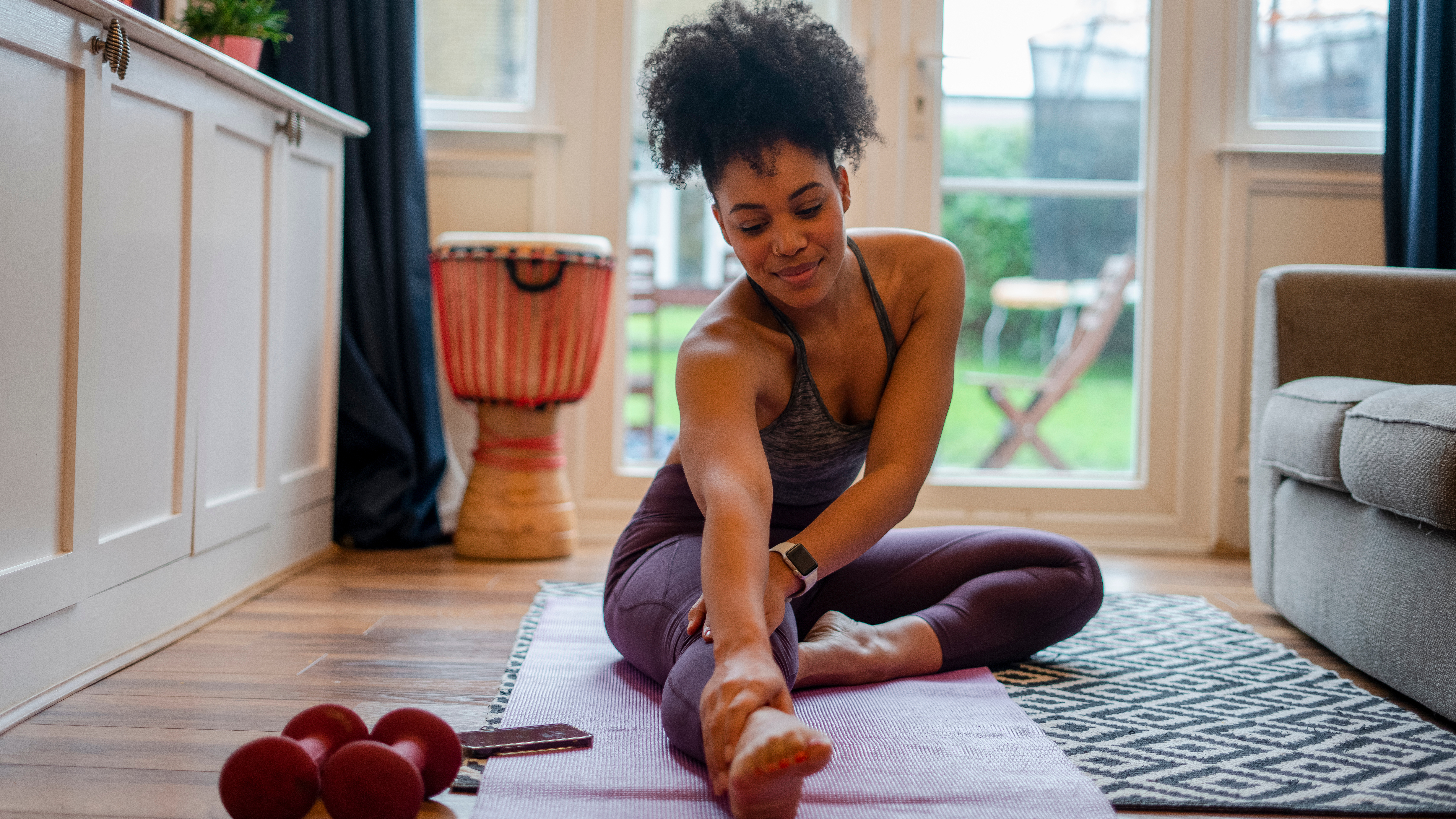New to exercise? A personal trainer suggests doing these three mobility tests before you pick up a weight
Keep an eye on your mobility as you build strength


I’m a certified personal trainer and nothing is more rewarding than watching my clients get stronger.
Once they start seeing and feeling the results of working with their bodyweight, many are eager to move on to dumbbells and kettlebells.
Progression is the key to building strength, and adding weights to exercises like the squat, lunge and overhead press is a fantastic next step for a beginner.
But before you pick up a weight, there’s one step you shouldn't miss: checking your mobility.
If your mobility is limited, working with weights could reinforce existing muscle imbalances and increase your risk of injury.
If you’re ready to incorporate weights into your fitness routine, you can check your mobility with these three tests to see how your body is moving, then, if needed, work on improving it with the suggestions that follow.
Three mobility tests
All you need is an exercise mat and a clear wall space.
Start your week with achievable workout ideas, health tips and wellbeing advice in your inbox.
Don’t push past your comfort levels in these tests—the point is to try and measure your mobility accurately.
If you do find any stiff spots, try doing the suggested stretches and mobility exercises, then retest in a few weeks.
1. Knee-to-wall ankle test
- Stand facing a wall with your feet hip-width apart
- Step your right foot close to the wall and your left foot back.
- Bend your right knee and move it forward so it touches the wall, keeping your heel on the floor.
- Move your right foot further away from the wall and see if you can still touch the wall with your right knee.
- Keep moving your foot away from the wall until your knee no longer touches it without your heel leaving the floor.
- Measure the distance between the wall and your toes.
- A distance between four and six inches indicates good mobility.
- Repeat the test with your left foot.
Assessing your mobility: If you aren’t able to move your foot at least six inches away from the wall, work on your ankle mobility with these exercises.
2. Active hip flexion test
- Lie on your back with your legs extended and feet hip-width apart.
- Bend your right knee to 90° and bring to above your hip, with your shin parallel to the floor.
- If your left leg lifts up from the floor or the foot rotates, stop.
- If your left leg stays relaxed, continue bringing your right knee toward your chest until your left leg moves.
- Repeat on the other leg.
Assessing your mobility: Being able to lift your knee past your hip while the resting leg stays still suggests good mobility. If you can’t do this, work on your hip flexor mobility with this stretch.
3. Back-to-the-wall flexion test
- Stand with your back against a wall, arms by your sides, palms facing you.
- Keep your back against the wall as you step your feet forward.
- Press your lower back and rib cage into the wall.
- Raise both straight up before you in an arc.
- Try to touch the wall above your head.
- If your lower back or rib cage arches away from the wall, stop.
Assessing your mobility: If you can bring both arms overhead to touch the wall without arching the lower back, it suggests good mobility. If not, work on your shoulder mobility with this exercise.

Jennifer Rizzuto is a freelance fitness journalist based in New York, NY. She’s been a NASM-certified personal trainer, corrective exercise specialist, and performance enhancement specialist for over a decade. She holds additional certifications in nutrition coaching from Precision Nutrition, and pre/post-natal exercise from the American Council on Exercise. As the daughter of a collegiate football coach who was never any good at sports, she understands how intimidating it can be to start an exercise regimen. That’s why she’s committed to making fitness accessible to everyone—no matter their experience level.
You must confirm your public display name before commenting
Please logout and then login again, you will then be prompted to enter your display name.



